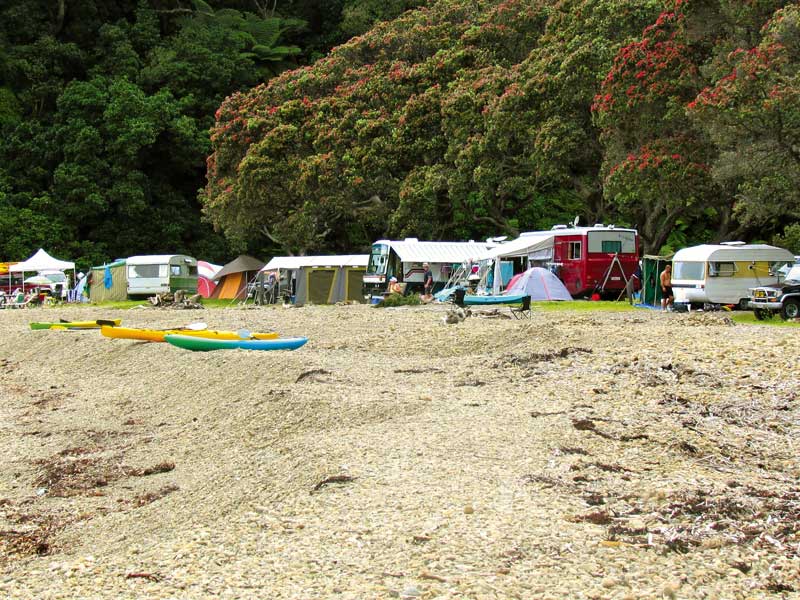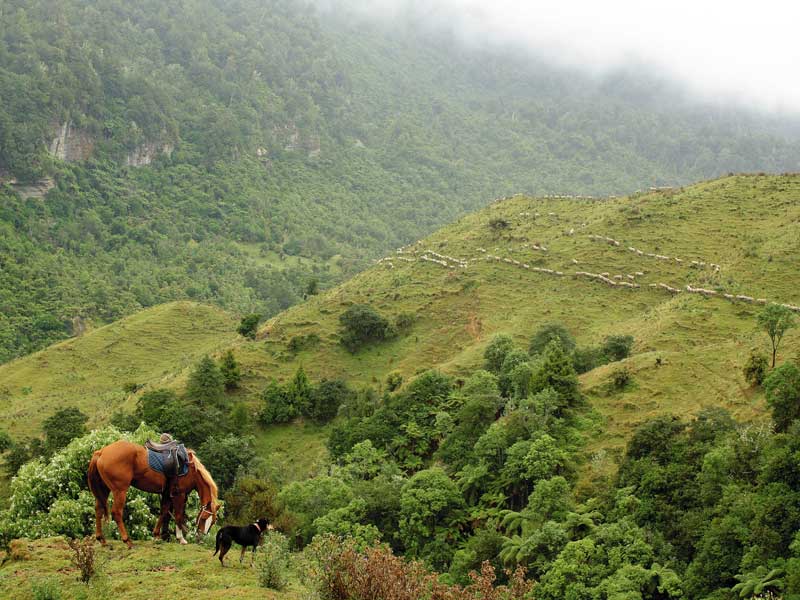Sandy bays, shaped like new moons, are slung between rocky promontories, expanding estuaries face up to the ocean, and man’s encroachment seems temporary and inconsequential. The settlements and towns – now often only remnants of their former selves – are reminders of the day when they supported the profitable transportation by sea of meat and wool from the region.
Today, the drive around the cape is a favourite for those travellers who yearn for places far from the madding crowd. Here they find a region laced with waterfall lakes and legends. It is steeped in Maori lore and the little villages, churches, carved marae, and lonely graveyards attest to its early history.
In Eastland the local council actively encourages visitors to freedom camp. From Waipiro in the north, to Turihaua beach near Gisborne, freedom camping is allowed through summer between the introduction of daylight saving and the Easter holidays of the next year.
All you need is a permit, rubbish bags, a supply of water, and a chemical toilet. The other beaches that belong to the scheme are Turihaua Beach, Pouawa Beach, Loisels Beach, Waihau Bay, Tolaga Beach, Kaiaua Beach, Tokomaru Bay, and Waipiro Bay.

What you need to know…
Cape Lighthouse is 22km from Te Araroa on a road beneath crumbling cliffs skirting the rocky shore. Climb the 700 steps to the lighthouse at sunrise and beat everybody else in New Zealand to greet the day. Te Araroa: this little hamlet was settled in 1843 by European missionaries and is home to one of the largest pohutukawa trees in New Zealand, thought to be over 600 years old. There’s a freedom camping area under Norfolk pines at Waipiro. Now a ghost town, at the turn of the century Waipiro was the largest settlement and administration centre on the East Coast. Cook’s Cove Walkway (2.5 hours return) through farmland and light bush leads to the inlet where the great captain once found safe anchorage. Wainui Beach is just north of Gisborne. In 1970 it became the eternal camping ground for 59 stranded sperm whales. Their bones are buried beneath the sand. Te Tapuwae o Rongokako is a marine reserve that following the coastline from Whangara down to the Pouwawa River mouth. Access is from the southern end where there are information boards. Tiny Tikitiki village is a stunning Maori place of worship. The exquisite church was built in 1924, as a memorial to the soldiers of Ngati Porou who died in World War One. The East Cape is remote, which is perhaps its greatest appeal. Supplies are found at general stores, not supermarkets, but you will be unlikely to starve.







